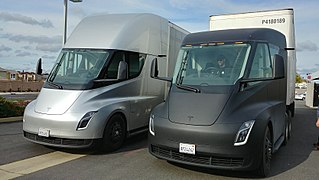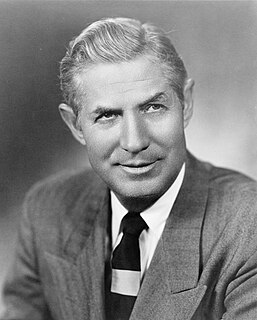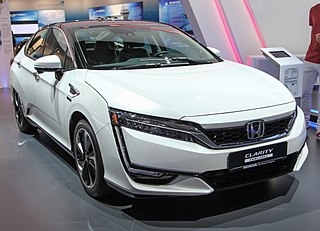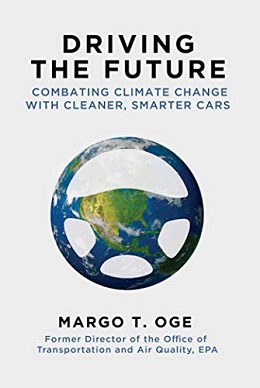 | |
| Author | Joseph J. Romm |
|---|---|
| Language | English |
| Publisher | Island Press |
Publication date | 2004 |
| ISBN | 1-55963-703-X |
| OCLC | 53138756 |
| 333.79/68 22 | |
| LC Class | TP261.H9 .R65 2004 |
| Preceded by | Cool Companies (1999) |
| Followed by | Hell and High Water |

The Hype about Hydrogen: Fact and Fiction in the Race to Save the Climate is a book by Joseph J. Romm, published in 2004 by Island Press and updated in 2005. The book has been translated into German as Der Wasserstoff-Boom. [1] Romm is an expert on clean energy, advanced vehicles, energy security, and greenhouse gas mitigation. [2] [3]

Joseph J. Romm is an American author, blogger, physicist and climate expert who advocates reducing greenhouse gas emissions and global warming and increasing energy security through energy efficiency, green energy technologies and green transportation technologies. Romm is a Fellow of the American Association for the Advancement of Science. In 2009, Rolling Stone magazine named Romm to its list of "100 People Who Are Changing America", and Time magazine named him one of its "Heroes of the Environment (2009)", calling him "The Web's most influential climate-change blogger".
Island Press is a nonprofit, environmental publisher based in Washington, D.C., United States, that specializes in natural history, ecology, conservation, and the built environment. Established in 1984, Island Press generates about half of its revenue through sales and half through donations by organizations and individuals.

Energy security is the association between national security and the availability of natural resources for energy consumption. Access to (relatively) cheap energy has become essential to the functioning of modern economies. However, the uneven distribution of energy supplies among countries has led to significant vulnerabilities. International energy relations have contributed to the globalization of the world leading to energy security and energy vulnerability at the same time.
Contents
Over 200 publications, including Scientific American , Forbes magazine and The New York Times , have cited this book. [4] [5] [6] The book was named one of the best science and technology books of 2004 by Library Journal. [7]

Scientific American is an American popular science magazine. Many famous scientists, including Albert Einstein, have contributed articles to it. It is the oldest continuously published monthly magazine in the United States.

Forbes is an American business magazine. Published bi-weekly, it features original articles on finance, industry, investing, and marketing topics. Forbes also reports on related subjects such as technology, communications, science, politics, and law. Its headquarters is located in Jersey City, New Jersey. Primary competitors in the national business magazine category include Fortune and Bloomberg Businessweek. The magazine is well known for its lists and rankings, including of the richest Americans, of the world's top companies, and The World's Billionaires. The motto of Forbes magazine is "The Capitalist Tool". Its chair and editor-in-chief is Steve Forbes, and its CEO is Mike Federle. It was sold to a Hong Kong-based investment group, Integrated Whale Media Investments.

The New York Times is an American newspaper based in New York City with worldwide influence and readership. Founded in 1851, the paper has won 125 Pulitzer Prizes, more than any other newspaper. The Times is ranked 17th in the world by circulation and 2nd in the U.S.
The thrust of the book is that hydrogen is not economically feasible to use for transportation, nor will its use reduce global warming, because of the cost and greenhouse gases generated during production, the low energy content per volume and weight of the container, the cost of the fuel cells, and the cost of the infrastructure. The author argues that a major effort to introduce hydrogen cars before 2030 would actually undermine efforts to reduce emissions of heat-trapping greenhouse gases such as carbon dioxide. [8] [9] [10] [11]

Hydrogen is a chemical element with symbol H and atomic number 1. With a standard atomic weight of 1.008, hydrogen is the lightest element in the periodic table. Its monatomic form (H) is the most abundant chemical substance in the Universe, constituting roughly 75% of all baryonic mass. Non-remnant stars are mainly composed of hydrogen in the plasma state. The most common isotope of hydrogen, termed protium, has one proton and no neutrons.

Transport or transportation is the movement of humans, animals and goods from one location to another. In other words the action of transport is defined as a particular movement of an organism or thing from a point A to the Point B. Modes of transport include air, land, water, cable, pipeline and space. The field can be divided into infrastructure, vehicles and operations. Transport is important because it enables trade between people, which is essential for the development of civilizations.

Global warming is a long-term rise in the average temperature of the Earth's climate system, an aspect of climate change shown by temperature measurements and by multiple effects of the warming. The term commonly refers to the mainly human-caused observed warming since pre-industrial times and its projected continuation, though there were also much earlier periods of global warming. In the modern context the terms global warming and climate change are commonly used interchangeably, but climate change includes both global warming and its effects, such as changes to precipitation and impacts that differ by region. Many of the observed warming changes since the 1950s are unprecedented in the instrumental temperature record, and in historical and paleoclimate proxy records of climate change over thousands to millions of years.
















